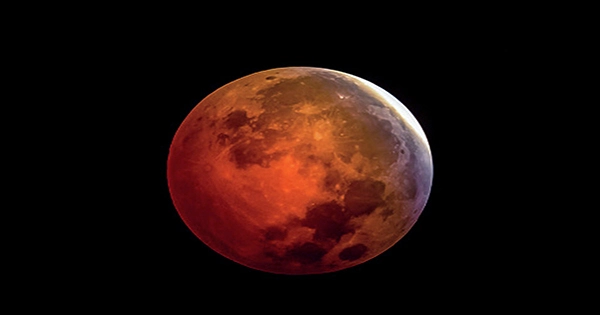This weekend marks the first of two total lunar eclipses in 2022. Our natural satellite will pass the Earth’s shadow between May 15 and 16, gradually darkening until it gets the typical red hue. Because of this, it is known as the Blood Moon in English-speaking nations, and the color is caused by the Earth’s atmosphere refracting red sunlight onto the darkened Moon. The Moon will also be near to its perigee, the point in its elliptical orbit where it is closest to Earth, which means it will be bigger than typical, known as a supermoon.
Most of North and Central America, all of South America, and all of Antarctica will see the Super Blood Moon in its entirety. The first phases of the eclipse will be visible across Europe, the Middle East, and Africa, with totality beginning before the Moon dips below the horizon, crimson like the setting Sun. Instead, the eclipsed Moon will rise during the later parts of the astrological event in the Pacific, the northwest of North America, and Polynesian countries. The entire show will run more than five hours — 318 minutes and 40 seconds to be precise.
The eclipse will last 84 minutes and 53 seconds, and because the northern point of the Moon will pass near to the center of Earth’s shadow, it will be fairly dark. At 9:30 p.m. ET, the Moon passes through the penumbra, the slightly lighted zone around Earth’s shadow. When the partial eclipse begins, our spacecraft will enter the entire shadow roughly one hour later. The whole spectacle of the total eclipse will commence at 11:30 p.m. on May 15, after another hour of waiting. It will reach its maximum darkness in 42 minutes and conclude at 00.53 a.m. ET.
It will take another hour for the Moon to totally emerge from Earth’s shadow, then another hour before it emerges from the penumbra. Worry not if you are not in the path of the entire or partial eclipse, if the sky is gloomy, or if you simply prefer to watch it from the comfort of your couch. Thanks to the Virtual Telescope Project, you may see it live online. Don’t worry if you miss this one. The next one will be visible over the Pacific on November 8, 2022. We’ll have to wait until March 14, 2025 after that.
















